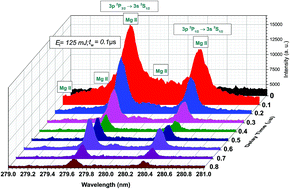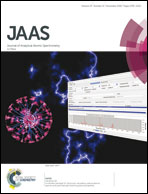Time-resolved study of the plasma produced from animal muscle tissue using a Nd:YAG laser
Abstract
This paper reports studies on time-resolved laser induced breakdown spectroscopy (LIBS) of plasmas induced by Nd:YAG laser pulses on a sample lyophilized from swine muscle tissue. Samples were measured under vacuum conditions (0.1 Pa), and the laser was operated at 1064 nm, with 6–9 ns laser pulses. The behavior of specific neutral and ionized emission lines of K, Mg, Mg+, H, and O as well as molecular bands such as CN (B2Σ+–X2Σ+), C2 (d3Πg–a3Πu), NH (A3Π–X3Σ−) and N2 (c3Πu–B3Πg) was characterized. Spectroscopic diagnostics were used to determine the time-resolved electron density and excitation temperatures. This work complements our previous studies by comparing the different mechanisms of plasma formation depending on the source of excitation, both Nd:YAG and transversely excited atmospheric (TEA) CO2 lasers. Plasma parameters, electron densities and vibrational temperatures of CN were measured from the temporal analysis of Nd:YAG induced plasma and were compared with the TEA-CO2 induced plasma results. In addition, complementary Scanning Electron Microscopy (SEM) combined with Energy-Dispersive X-ray (EDX) spectroscopy and LIBS has been performed to assess sample homogeneity.



 Please wait while we load your content...
Please wait while we load your content...